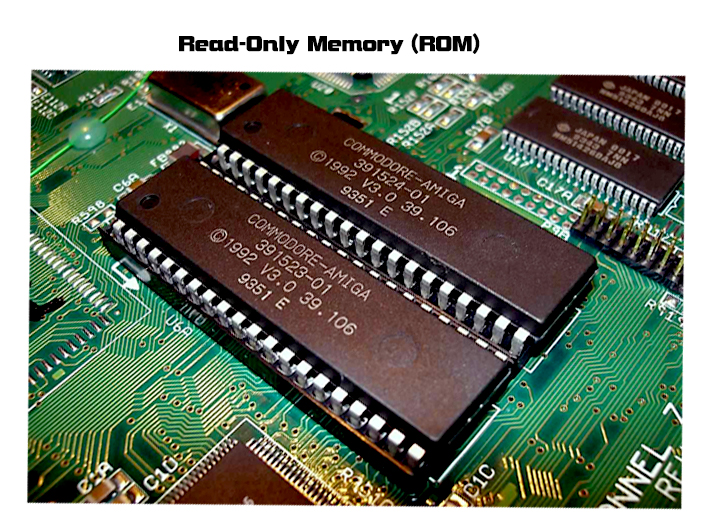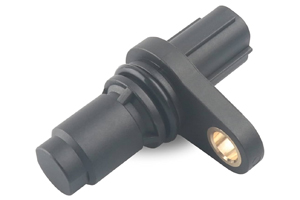了解 ROM 的類型:唯讀記憶體完整指南
Author:admin Date: 2025-05-07 09:25 Views:672
ROM – Read Only Memory: Basics, Structure, Size, and Classifications in Digital Electronics
There are many types of memory available for a device. The common options include ROM, RAM, and hard drive. Knowing each of these memory types is vital to understanding how each is used and for which applications. Today, we want to focus on ROM to see why it is crucial, types of ROM, applications, and much more.
What is ROM?

ROM stands for Read-Only Memory. This is a type of non-volatile memory that electronic devices use to store data or instructions permanently and cannot be changed or erased. These instructions or data are vital for the operation of a device, including booting up and running the device’s basic functions.
Importance of ROM in Devices
The various types of ROM are important to different devices. Below are why such a memory is vital for devices.
1. Startup or Boot Process
The work of ROM is to store the Basic Input/Output System (BIOS). This is the first piece of software that runs when a device is turned on. For example, in computer systems, BIOS is important for initializing the hardware components, checking if they are working, and initiating the booting of the operating system.
2. Hardware Communication and Functionality
ROM also has important instructions needed for the different types of hardware components to communicate and function as expected. The same can be used for managing data, reading and writing to external devices, and many other functions.
3. Improves Data Integrity
Since ROM content is permanently stored, it ensures that essential information needed to run the system is protected. This information does not get lost even when the device is turned off, which is vital for the system’s reliability and stability.
4. Firmware Maintenance and Updates
You can also do firmware updates and maintenance with ROM. Such updates improve the device’s overall performance, security, and functionality. That is why systems usually get firmware updates. This information is stored in the ROM.
Features of ROM
Read Only Memory has several features that make it work as expected. Here are the features of ROM you are expected to encounter.
- ROM is non-volatile, which means that even if the power is disconnected, this information is not lost. This is unlike Random Access Memory (RAM), which loses its data once the power is disconnected.
- Since memory is read-only, it means that the data stored in it can only be read and not altered or written. This is a vital feature of ROM that ensures system stability and prevents accidental changes.
- Permanent storage is a key feature of ROM. The data vital for running the system is stored permanently. This ensures each time you turn on the device, it will work.
- ROM also offers fast access times needed for retrieving data. For example, many devices now have a very short boot time. For this reason, you can be sure the critical operating system is loaded fast using the ROM data so you can start using the device.
- ROM remains a cost-effective solution for storing permanent data and instructions.
Applications of ROM
Computer systems are the most obvious application for ROM. They use ROM to store important booting-up information. Examples include BIOS and UEFI. This information is essential for initializing the hardware connected to the computers and loading the operating system.
Other than storing the BIOS, it can also store the firmware. This is vital software that runs a device. For example, your phone comes with firmware that is important for proper operation.
Game consoles also have ROM chips for storing game data. This makes loading and playing the game easy.
Devices such as calculators and other peripheral devices could also use ROM. The data can store important functions that are readily available each time you need to use them.
Optical storage, such as CD-ROM use has the same format. Once you have written data on a CD-ROM, you cannot write more information over it.
Types of ROM

Various types of ROM memory are available. The one you choose can determine how well a device works. It is, therefore, important to understand the ROM functionality before choosing. Here are the top types of ROM.
– PROM
Programmable Read Only Memory (PROM) offers you the option of programming it. However, you cannot alter the data and instructions once you have programmed the memory. Unlike the other types, such as EPROM, where you can erase data electronically, this cannot be altered once the programming is done. This feature, in a way, makes it more dependable.
– EPROM
Erasable Programmable Read-Only Memory (EPROM) is still non-volatile but allows for erasing and rewriting the code that runs it. It is found in many devices, such as microcontrollers. EPROM type of ROM was the most commonly used option before introducing EEPROM and flash memory.
– EEPROM
Electrically Erasable Programmable Read-Only Memory (EEPROM) is a non-volatile type of ROM that allows for electrically erasing and reprogramming of the ROM. You can rewrite or erase the data on the memory without removing it from a device or requiring special light sources.
– Flash Memory
Flash memory is also a non-volatile memory that can be used to store data, whether short-term or long-term. A good example of flash memory is USB memory sticks, memory cards for cameras, and other related devices. Solid-state drives (SSDs) are also part of flash memory. The best part is that you can erase and add data to these types of ROM.
– Mask ROM
The manufacturer programs this type of ROM memory capacity. It is usually customized to the device that it will be used in. Also, you do not have the chance to alter the data in the memory like you would with other types of ROM, such as EEPROM. The cost is the biggest benefit of using this type of ROM. It is more affordable and still more compact than the other types.
RAM vs ROM vs Hard Drive: Understand the Difference

You are likely to come across these types of memories when doing research about ROM. RAM (Random Access Memory) is used for the temporary storage of data that the CPU needs to operate. This ensures that the CPU can get quick access to the data it needs for it to operate efficiently.
RAM is volatile. This means it loses its content whenever the computer is turned off. The good side is that RAM is more efficient and faster than ROM and hard drives.
RAM comes with larger capacities than ROM. Expect the range to go into gigabytes. It all depends on the application.
As we have already seen, ROM is non-volatile and can store important information needed to run a device. This includes the BIOS and firmware information. Its contents will not be lost when power is turned off.
Hard disk drives, or HDDs, are used for long-term storage of files, operating systems, and other types of data. They are also non-volatile, which means they can retain their data even if the computer is turned off.
Hard drives are slower than ROM and RAM, so they are secondary to them. The best part is that they also have a larger capacity, as high as terabytes. This makes them good for storing large files vital for different applications. An example is the operating system, which is usually too large to fit in ROM or RAM.
結論
ROM is non-volatile, meaning that the information stored in it remains available even when power is turned off. Also, ROM is essential for making sure the device runs well. It is vital for storing information such as the BIOS, UEFI, and firmware. All these are important to run a device, initialize the hardware, and much more. Expect to come across many devices with ROM as it remains critical for their functionality. Devices will still have RAM and HDD, which all have different functionalities.
請發送 RFQ,我們將立即回覆。
常見問題
How is PROM different from the other types of ROM?
PROM is designed to be programmed once after it has been manufactured. You only get one chance to program it to a specific application. Once it is programmed, its contents are permanent and cannot be changed.
How is flash memory different from EEPROM?
Flash memory is considered a type of EEPROM because its data can be written in blocks rather than one byte at a time. This makes flash memory faster and more suitable for applications that need to store large files.
Why do we have different types of ROM?
The different types of ROM offer varying degrees of speed, flexibility, functionality, and cost. So, it depends on the application. You can always choose the type of ROM that works best for your needs.
Can ROM be changed or upgraded?
It depends on the type of ROM. EEPROM and flash memory can be reprogrammed or updated. However, Mask ROM and PROM cannot be modified once they have been programmed for a specific function.


